As the coyote population continues to grow, coyote hunting has become a popular activity across the United States for sport and wildlife management. Understanding the legal dates and regulations for coyote hunting is crucial for responsible hunting.
This article explores whether coyote hunting is permitted year-round in the U.S., providing a state-by-state overview of hunting seasons and regulations.
Coyote Population and Regulations
Coyotes are highly adaptable animals that have thrived in various environments. Their population has expanded significantly to millions over the past few decades. Texas has the largest number of coyotes, and this has become a problem to farmers and their livestock.
As a result, many states have implemented hunting regulations as a means of managing coyote populations, controlling their numbers, and reducing predation on livestock and other wildlife.
Coyote hunting regulations are primarily established at the state level, with each state determining its own rules regarding hunting seasons, licensing requirements, and legal firearms. Generally, hunters must possess the appropriate licenses and permits before engaging in coyote hunting.
In many states, coyote hunting is allowed year-round, especially on private lands. However, public land hunting may have specific seasons or restrictions.
However, these regulations vary widely from state to state based on local ecological needs. Hunters need to familiarize themselves with local laws to ensure compliance.
Is Coyote Hunting Year Round?
If you are not sure whether you can hunt coyote all year round in any state in the US, here’s a state-by-state overview for your reference:
- Alabama: Year-round on public lands; specific nighttime seasons on private lands, and coyote hunting license required.
- Alaska: Year-round in most hunting units and legal from September to April in some specific hunting units; hunters must have appropriate licenses.
- Arizona: Year-round hunting but dates vary in different hunting units; license required and must follow firearm regulations.
- Arkansas: Hunting year-round statewide, but trapping is only allowed from Aug. 1, 2024 – March 31, 2025. Dogs are allowed in daytime.
- California: Year-round hunting allowed; must adhere to firearm restrictions and designated zones.
- Colorado: Year-round with a valid small game license; no permit required.
- Connecticut: Year round except for Sunday; hunters must obtain licenses and permits; no trapping and baiting allowed.
- Delaware: Limited numbers of coyote in this state; seasons start from September to February.
- Florida: Year-round and no limits; regulations vary for public lands.
- Georgia: Year-round on private lands; public land hunting in May.
- Hawaii: No coyote population; therefore, no hunting seasons.
- Idaho: Year-round hunting allowed; no bag limit and license is required.
- Illinois: Year-round except during firearm deer season when only licensed deer hunters may take coyotes.
- Indiana: Hunting is allowed from October to March of the next year; no limit on the number taken.
- Iowa: Year-round permitted except for deer season; no limit on the number taken.
- Kansas: Year-round hunting allowed; no limit on the number taken.
- Kentucky: Year-round hunting permitted; no limit on the number taken.
- Louisiana: Year-round hunting allowed with a valid license; specific methods may apply.
- Maine: Year-round hunting allowed in daytime with a valid license; no limit on the number taken. Nighttime hunting only allowed from December to August.
- Maryland: Hunting allowed year round, day and night with no limits.
- Massachusetts: Specific seasons apply: Jan. 1–March 8, 2025 and Oct. 18, 2025– 7, 2026; hunters must obtain licenses and permits.
- Michigan: Open from July to April of the next year, otherwise year-round with a fur harvester’s license required.
- Minnesota: Hunting permitted from September to February with a valid license; no limit on the number taken.
- Mississippi :Year-round hunting allowed statewide with a valid license; specific methods may apply.
- MissouriYear-round hunting allowed, however trapping is only allowed from November to February, no matter what firearms.
- Montana: Year-round hunting permitted with no bag limits. No license required.
- Nebraska: Year-round hunting allowed No nag limit but a valid permit required.
- Nevada: Year-round hunting permitted with no bag limits.A trapping license is necessary; while hunting license is not required.
- New Hampshire: Specific seasons apply; hunters must obtain licenses and permits.
- New Jersey :Hunting allowed from September to March. Required hunting license and legal weapons and bows.
- New Mexico: Year-round hunting permitted with no bag limits.
- New York: Specific seasons apply from October to March and can be hunted in day or night; hunters must obtain licenses and permits.
- North Carolina: Only can be hunted year-round on private lands. On public land, you can hunt coyotes when there is a season open for other game animals.
- North Dakota: Hunting allowed from April to March of next year. For night hunting, the season starts in November.
- Ohio: Year-round hunting permitted with a valid license and permit. Use legal firearms the same as deer seasons.
- Oklahoma: Year-round hunting allowed with no bag limits. No hunting permit required on private lands.
- Oregon: Year-round hunting permitted but requires legal weapons and licenses, even on some private lands.
- Pennsylvania: Year-round hunting allowed; hunters must obtain licenses and permits.
- Rhode Island: Year-round hunting allowed on private lands; only permitted on state lands during specific seasons like deer and turkey (September to February, April to May).
- South Carolina: Year-round hunting permitted on public and private lands; hunting license/permit required.
- South Dakota: Hunting allowed from November to April; no bag limits and no firearms restrictions.
- Tennessee: Year-round hunting permitted with a valid license.Night hunting only allowed in August.
- Texas: Hunting is allowed from October to February, specific dates may vary each year. No bag limits.
- Utah: Year-round hunting permitted.
- Vermont: Year-round hunting at any time; coyote hunting with dogs only allowed from December to March. Hunters must obtain licenses and permits.
- Virginia: Year-round hunting permitted on private lands; specific seasons from September to March on national lands.
- Washingto n:Year-round hunting is permitted with hunting licenses; but no dogs are allowed.
- West Virginia: Year-round for hunting; while specific trapping seasons apply from September through February.
- Wisconsin: Year-round for hunting and no license required on private lands; and October to February for trapping.
- Wyoming: Year-round hunting permitted with no licenses, and no bag limits.
How to Tell Wolf or Coyote?
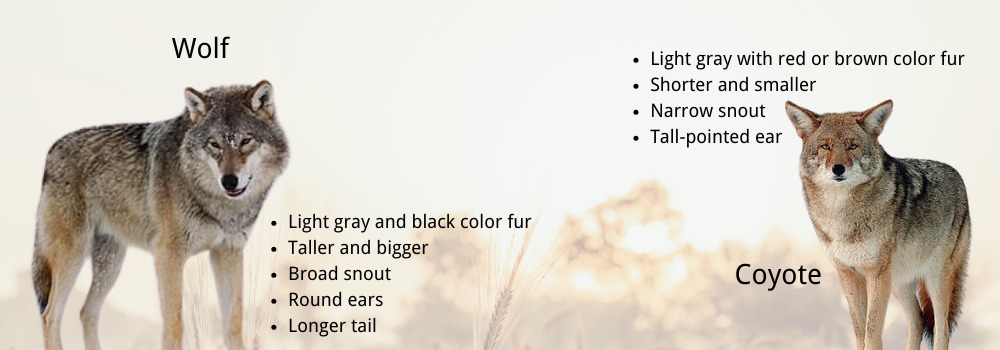
Some hunters may be confused about wolf and coyote, both of them belong to the dog family Canidae with similar appearance.
However, distinguishing between a wolf and a coyote can be quite straightforward if you know what to look for.
Here are some key differences that can help you identify these two predators:
- Fur Color: Wolves typically have light gray with black fur, while coyotes have more light gray and red or brown fur.
- Size: Wolves are significantly larger with shorter torso and a longer tail, weighing between 80 to 120 pounds. In contrast, coyotes are much smaller, weighing about 20 to 50 pounds.
- Facial Features: Wolves have broad snouts and smaller, round ears. Coyotes, on the other hand, have narrower snouts and tall pointed ears.
- Paw Size: The paw size is another distinguishing feature. A wolf’s paw is larger and measures approximately 4 inches by 5 inches, while a coyote’s paw is smaller, at about 2 inches by 2.5 inches.
By observing these characteristics, you can confidently tell whether you’re looking at a wolf or a coyote.
Do Coyotes Hunt at Night or Day?
Coyotes are primarily nocturnal hunters, meaning they tend to be more active during the night. However, they can also hunt during the day.
The best times to hunt coyotes are generally in the early morning or late evening, especially in winter when food is scarce.
During these times, they are more likely to respond to food calls and are easier to spot as there is not much cover in winter.
While they do most of their hunting under the cover of darkness, many hunters have successfully taken coyotes during daylight hours as well. So whether you prefer hunting at night or during the day, there’s potential for success with coyotes.
Most importantly, there is a restriction on night hunting for coyotes in some states. You better check with the local organization to avoid any illegal hunt.
Coyote Hunting From Tree Stand or Blind?
Whether you choose to hunt from a tree stand or a ground blind for coyote hunting, both options have their advantages:
- Tree Stand: It offers better visibility over open areas and allows you to see further distances without being detected easily. However, you need to ensure that your movement is minimal to avoid alerting nearby coyotes. Safety is also crucial for hunting from high places. Remember to wear Kalkal treestand harness to keep you safe from falling.
- Ground Blind: It is more flexible provides excellent concealment and can be set up in any location where coyotes frequently show up. It’s easier to stay hidden from their keen senses of smell and sight when you’re at ground level. Kalkal hunting blind could be a great option with its quick pop-up and camouflage designs.
Ultimately, the choice depends on your hunting style and the terrain you’re working with. Both methods can be effective if used properly.
Coyote Hunting Guns
There are a lot of firearms suitable for coyote hunting. The following options are popular among hunters:
- .223 Remington: This is one of the most favored cartridges due to its availability and effectiveness. It provides good stopping power with minimal hide damage when using light varmint bullets.
- .22/250 Remington: Known for its high velocity and accuracy, this cartridge is excellent for long-range shots but may cause more pelt damage than others.
- Shotgun: A shotgun loaded with No. 4 buckshot is a great choice for close-range encounters in thick cover. It’s effective and often easier to handle in tight spaces.
You can choose other guns depending on your hunting environment and personal preference, but the above options are widely regarded as effective for coyote hunting.
Note that in some states, they have regulations on what types of weapons you can use to hunt coyotes. Make sure to check and follow the rules.
Coyote Hunting Tips for Beginners
If you’re new to coyote hunting, here are some essential tips to help you get started:
- Understand Their Behavior: Coyotes have keen senses of smell and sight. Pay attention to the wind direction to avoid alerting them to your presence.
- Use Calling Techniques: Mimicking the sounds of distressed prey or other coyotes can effectively attract them. Start with low-frequency howls and gradually increase your volume to call coyote in.
- Scout Your Area: Look for signs of coyote activity such as tracks and droppings (scat) containing bones or fur. This will help you identify where they frequently show up.
- Choose the Right Gear: A reliable rifle or shotgun is crucial for a clean and ethical kill shot. Make sure you have a good scope for accuracy and consider camouflage clothing to blend into your surroundings.
- Be Patient and Silent: Coyotes can be skittish, so remain quiet and patient while waiting for them to approach your calling setup.
Learn more about coyote hunting:
- Do Coyotes Hunt In Packs Or Alone?
- What Gear Do You Need For Coyote Hunting?
- Can You Eat Coyote? – Let’s Find Out
- Can Coyote See Red Light and How It Affects Your Hunt?
Conclusion
In summary, coyote hunting is mostly permitted year-round in many states across the U.S., particularly on private lands, while others may require specific seasonal restrictions or licenses and permits.
Hunting regulations can still vary significantly by state and even within regions of states. Hunters should always check on the local regulations and best practices to ensure they contribute positively to wildlife management efforts.
For detailed information about each state’s regulations, it is advisable to consult state wildlife agencies or visit the official wildlife management websites directly before planning any coyote hunts.


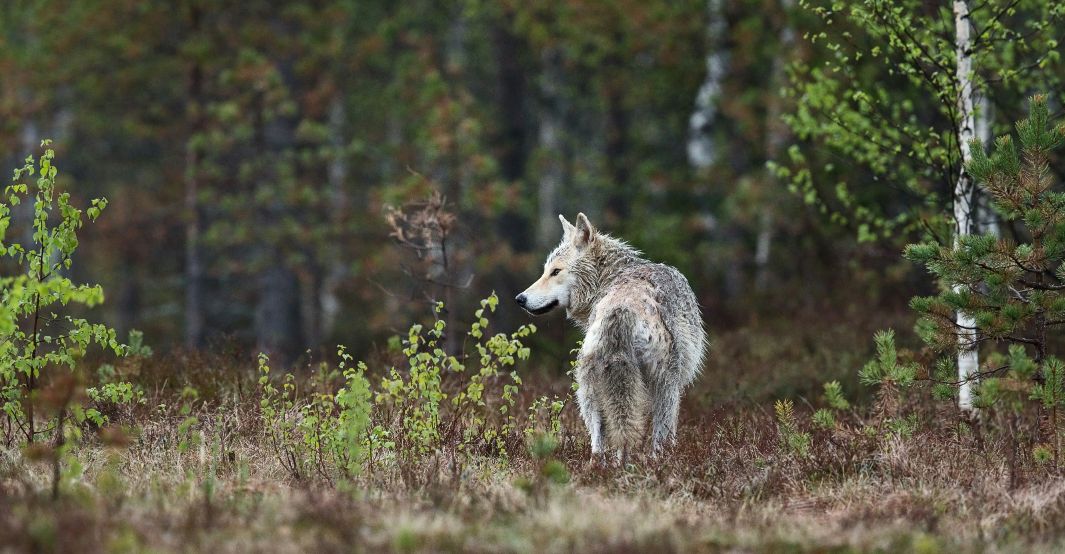
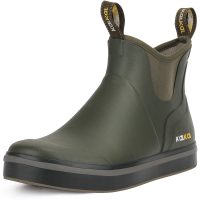

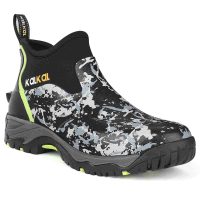

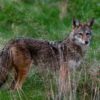


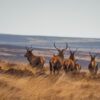
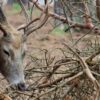

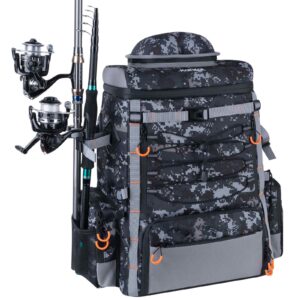
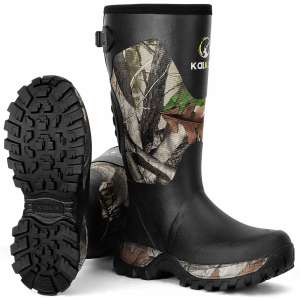
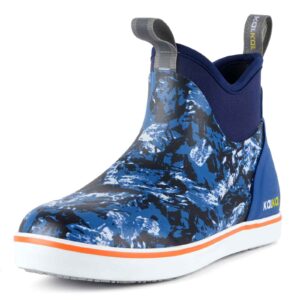
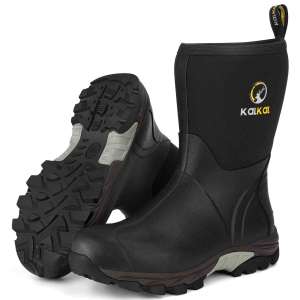


One comment on “Is Coyote Hunting Year Round Allowed In The U.S.?”
Bob eiwrwild
When is south Dakota going to alow pcp high pressure airgun hunting like the other 22 states that have approved it just in the last 7 yrs.with pcp airguns now since you can easily find a pcp that puts out 1600 fpe to a .357 that will cleanly take a doe or buck,antilope.it fits in that range of a long bow shot to just under a longer muzzleloader shot.Studies have long showed that for a ethical kill it is found that if your pcp puts out 1 fpe for every animal,like a doe that weights 150 pds a .357 makes around 300 fpe plenty for a 65 yard shoot and you would have 270fpe left when the deer get slammed with the 127 gr solid lead bullet and a clean pass through.North Dakota just allowed it.just a hole .357 going through the lungs.both and out will easily do the job The 58 cal magladon 58 caliber makes over 1200 plus and th .72 cal zues puts out over 2000 fpe plus even smaller pcp’s like my
22 put out 90 fpe more than most. 22 target or subsonic rounds and when big game hunting deer-lets say,a pcp .357 doesn’t spoke deer a mile away and sometimes they are back feeding in the same place in a few minutes. And it’s great for disabled people and great for them 50 to 125 yard shots with the appropriate calibers. I will have to go to north Dakota from now on to hunt antelope and muledeer,whittail deer. I hate to give my money to another state but I will until south Dakota allowance pcp hunting with the .357, .45,.50 ,,51,.58,.72..I am not going ever do this but more deer have been taking over the last 110yrs with a .22 rifle than any other caliber,some with a .22 short like remigtons 28 gr 1000fps at under 25 .!yards in the past using a hard rd point,never a hollowpoint.in the 1930s many deer were taken by a frontal heads hot between the eyes or an inch above the eyes,right between them and the deer would just drop with the slug in its brain. Stories that my grandfather told me years back.know I am 60 plus.do not do or try this ever